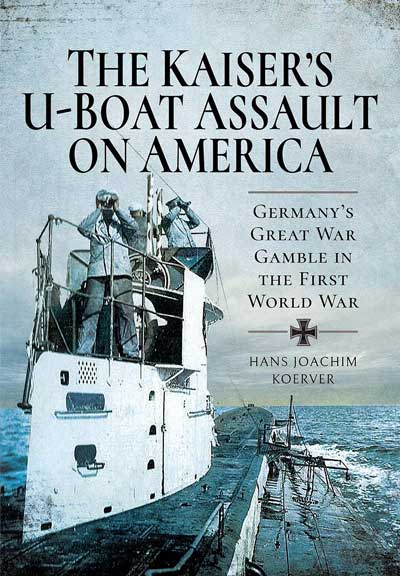The Kaiser’s U-boat Assault on America: Germany’s Great War Gamble in the First World War
Hans Joachim Koerver
 Hans Joachim Koerver’s work, The Kaiser’s U-boat Assault on America: Germany’s Great War Gamble in the First World War, is a well written narrative on the inner workings of Kaiser Wilhelm II’s government in World War I. Topics covered include the Imperial Navy’s quarrel with the chancellorship, the atmosphere of Germany’s working class, the resentment of the Royal Navy’s blockade, and President Woodrow Wilson’s role as mediator between Germany and the United Kingdom early in the war. The book avoids the traditional retelling of battles and military maneuvers, and instead it elaborates on the indecision of the Kaiser’s government on the issue of unrestricted submarine warfare, the influential weight that Grand Admiral Alfred von Tirpitz had within the government, and the struggle between the navy and chancellor.
Hans Joachim Koerver’s work, The Kaiser’s U-boat Assault on America: Germany’s Great War Gamble in the First World War, is a well written narrative on the inner workings of Kaiser Wilhelm II’s government in World War I. Topics covered include the Imperial Navy’s quarrel with the chancellorship, the atmosphere of Germany’s working class, the resentment of the Royal Navy’s blockade, and President Woodrow Wilson’s role as mediator between Germany and the United Kingdom early in the war. The book avoids the traditional retelling of battles and military maneuvers, and instead it elaborates on the indecision of the Kaiser’s government on the issue of unrestricted submarine warfare, the influential weight that Grand Admiral Alfred von Tirpitz had within the government, and the struggle between the navy and chancellor.
Hans Joachim Koerver is a well-established historian and researcher who has published several works on naval history, many of which focused on World War I. The Kaiser’s U-boat Assault on America utilizes sources gathered from the British National Archives, such as declassified documents and charts. Koerver also does an excellent job consulting German primary sources, such as the diaries of Admiral Georg Alexander von Müller, Naval Representative at the Imperial German Court. Koerver’s writing style presents different perspectives during the years leading to the United States’ declaration of war on Imperial Germany in 1917 and is readily accessible to the casual reader.
The Kaiser’s U-boat Assault on America is broken down into five parts, each containing several chapters. The first part contains two chapters in which Koerver compared the naval strengths of the United Kingdom and Imperial Germany along with their financial and industrial capabilities prior to the outbreak of war in 1914. Koerver displayed numerous graphs and charts to further illustrate the economic tolls exacted through blockade, U-boat warfare, and the war itself. The following four parts examine developments in the U-boat war for each year chronologically until 1917 and contain five to fifteen chapters each. These developments included the sinking of Lusitania and other vessels using unrestricted submarine warfare and correspondences between the Imperial government and the White House. Additionally, the narrative presented in this work portrayed the British with much criticism, which was further supported with decrypted messages gathered from Room 40, restrictions placed by the Royal Navy on shipping to neutral countries, and the British government’s rebuttal of Wilson’s offer to open peace negotiations.
The inner struggle within the Imperial government remained a theme throughout the book, as the Imperial Navy, backed by Tirpitz and much of the conservative population, pushed for the full adoption of unrestricted submarine warfare. In contrast, the German chancellor, Theobald von Bethmann Hollweg, pushed against unrestricted submarine warfare in recognition of the potential severance of relations with the United States. Koerver details this struggle well, and in the final chapters examines the Kaiser’s submission to Germany’s military leaders in the face of defeat. In doing so, the narrative is well ended with the declaration of war from the United States, and the rest is history.
- Barnsley: Pen & Sword Maritime, 2020
- 6-1/2” x 9-1/2”, hardcover, xii + 343 pages
- Photographs, maps, tables, appendices, notes, bibliography, index. $34.95
- ISBN: 9781526773869
Reviewed by Tyler McLellan, East Carolina University
